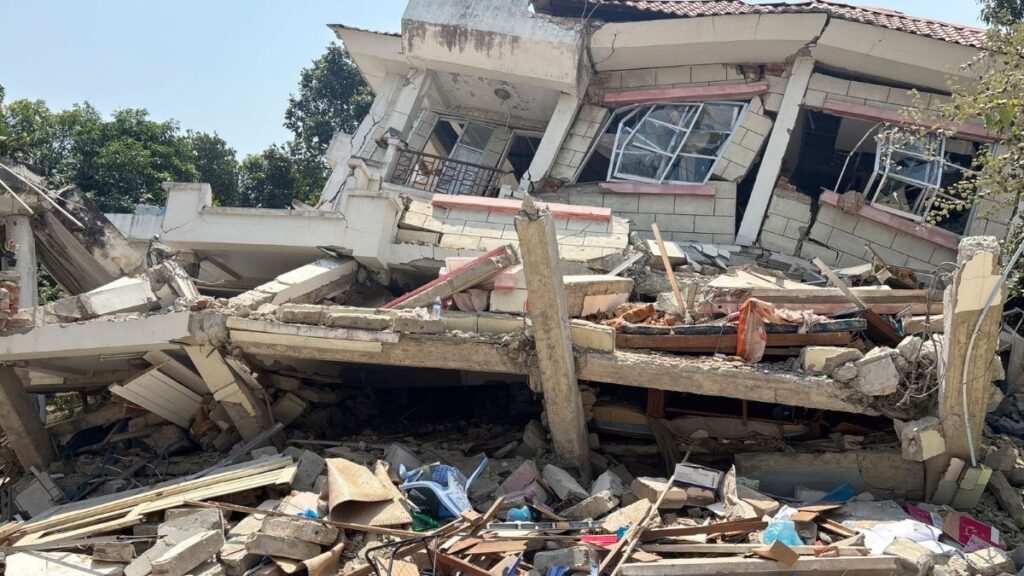On March 28, 2025, a terrible 7.7-magnitude earthquake shook Myanmar, causing extensive damage and a high death toll.
The number of fatalities has increased to 3,471 as of April 6, with over 4,671 people injured and 214 people still unaccounted for. The earthquake has damaged more than 4,800 pagodas and temples, nearly 1,800 schools, and over 5,223 buildings, severely impacting infrastructure.
International Aid and Assistance

The world community has come together to support and aid Myanmar in the wake of the tragedy. Neighboring nations like China, India, and other Southeast Asian countries have sent rescue crews and humanitarian aid. The United States has committed $9 million in relief, although its ability to respond has been impacted by recent cuts to its international aid programs.
The UN has emphasized the urgent need for coordinated relief efforts and called for international assistance. During his visit to the damaged areas, UN relief chief Tom Fletcher emphasized the “staggering” destruction and the local population’s tenacity.
In the wake of the tragic earthquake, India has taken significant action to assist Myanmar. Two Indian Air Force C-17 planes carrying a committed medical team of 118 people departed Agra on March 29. Since then, the Indian Army has established a fully functional field hospital in Mandalay to care for individuals hurt in the tragedy.
The Indian Navy has also contributed in addition to the medical assistance. The naval vessel INS Gharial landed in Yangon on Saturday morning with an enormous 442 tons of relief supplies. Among the supplies, 405 tonnes of rice will help communities facing food shortages in earthquake-affected areas.
Are there any challenges in aid distribution in Myanmar?
The distribution of help still faces difficulties despite the flood of foreign contributions. Intense heat and heavy rains have hindered relief operations, raising concerns about potential disease epidemics among displaced survivors.
The military government allegedly controls the distribution of supplies, and reports claim that it restricts aid in opposition-controlled areas. Relief efforts face further challenges due to ongoing military aggression, despite temporary ceasefires declared to facilitate humanitarian operations.
An already severe humanitarian situation in Myanmar, a nation dealing with political turmoil and continuous civil conflict since the military takeover in 2021, has been made worse by the earthquake.
Nearly 20 million people need aid, and more than 3 million remain displaced. The international community continues to call for unhindered aid access and long-term political solutions.


 Kashmir Tensions Rise After Attack and Border Clashes
Kashmir Tensions Rise After Attack and Border Clashes  Jhelum Water Release Triggers Pakistan
Jhelum Water Release Triggers Pakistan  Pakistan Admits ‘Dirty Work’ for U.S., Sparks Global Outrage
Pakistan Admits ‘Dirty Work’ for U.S., Sparks Global Outrage  India Imposes Sanctions on Pakistan After Terror Attack
India Imposes Sanctions on Pakistan After Terror Attack  Powerful Earthquake in Istanbul, Turkey
Powerful Earthquake in Istanbul, Turkey